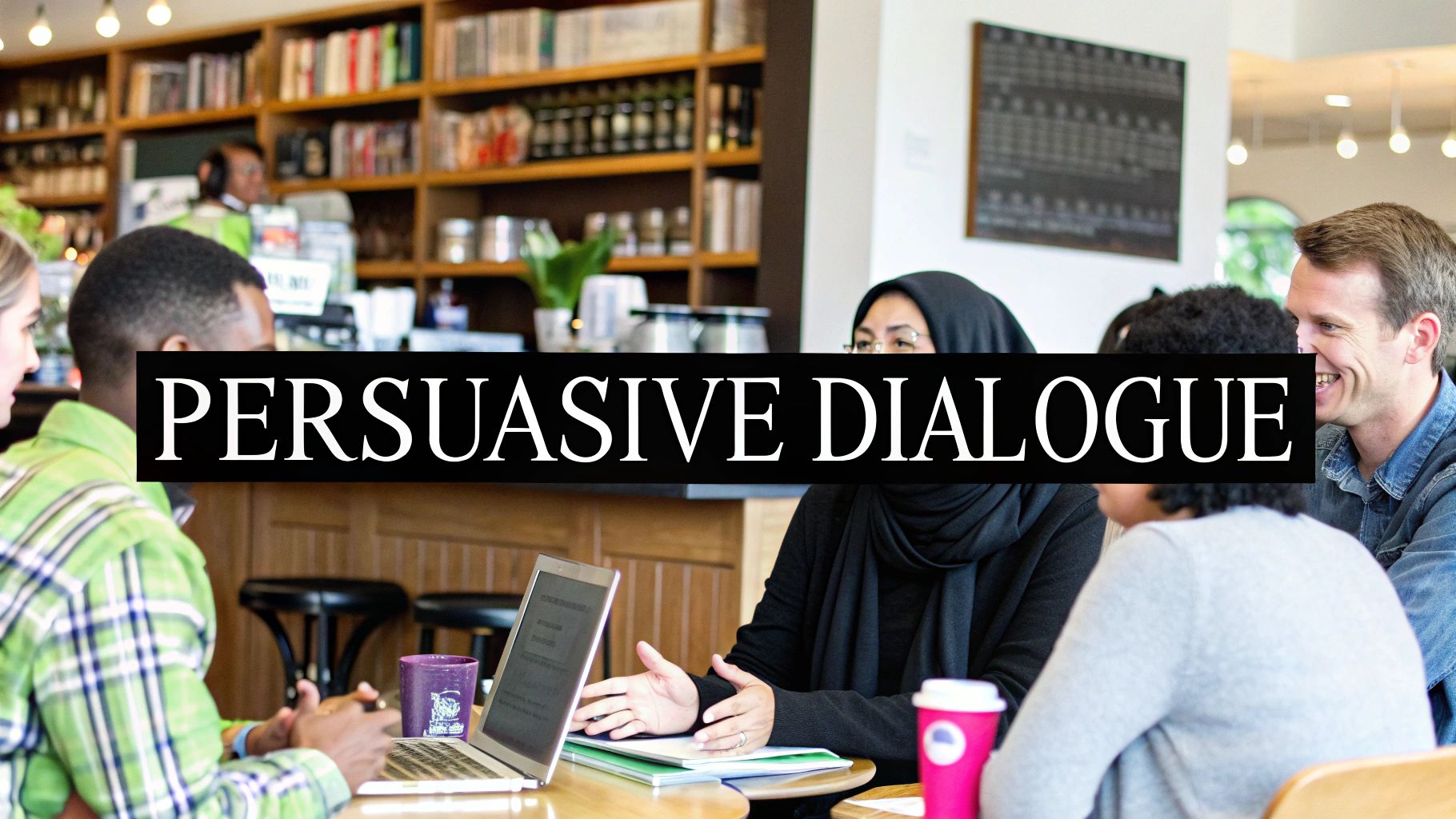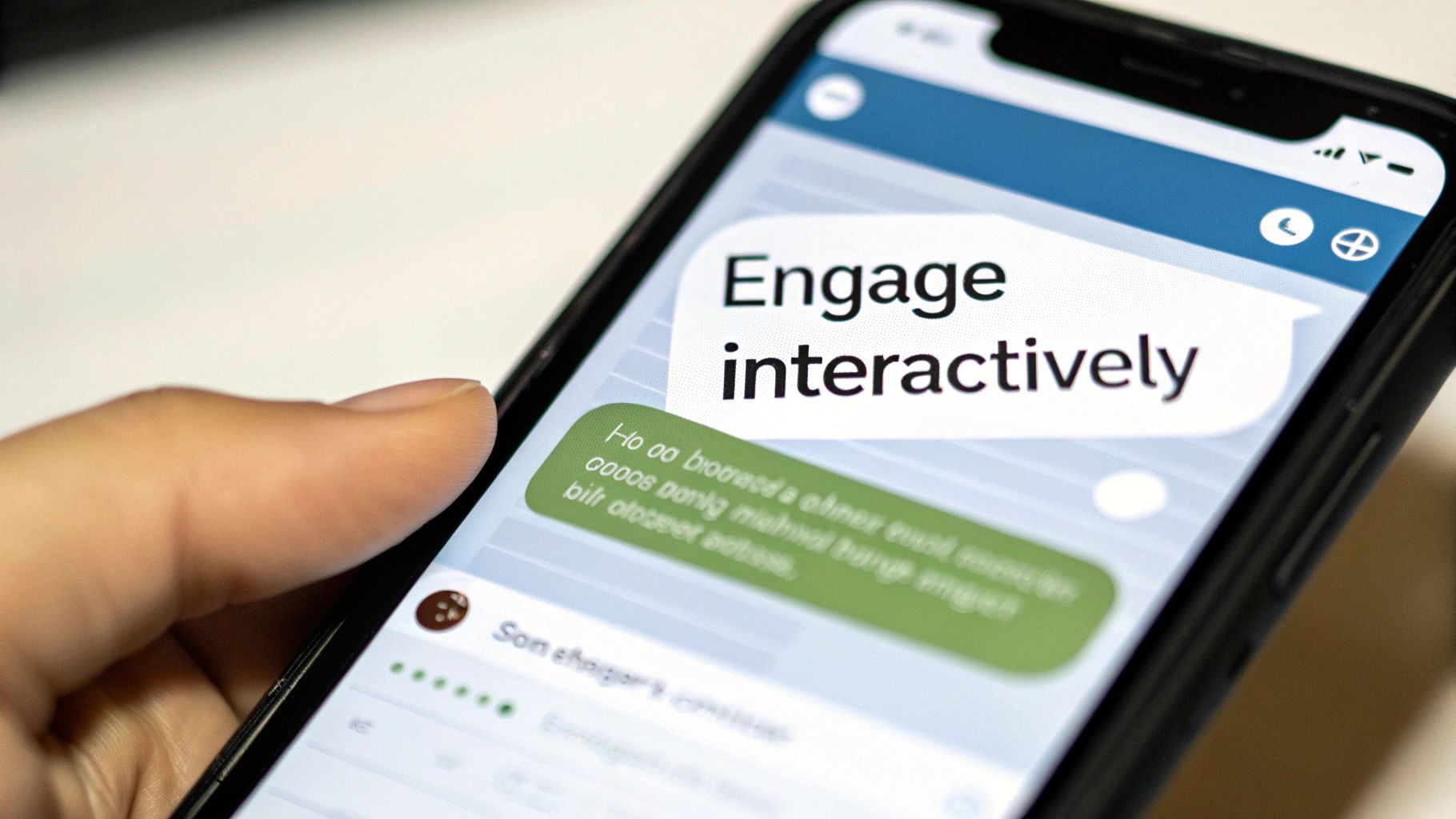
The Science Behind Persuasive Language

Persuasive language is about more than just choosing impressive words. It's rooted in how our brains process and respond to communication. When we select the right words, they create strong neural connections and trigger emotional responses that make our message more impactful.
The Emotional Impact of Words
Some words connect with us more deeply than others. For example, "exclusive" and "limited-time" tap into our natural fear of missing opportunities, pushing us to take quick action. Words like "community" and "together" build trust by creating a sense of belonging. These emotional triggers make messages stick in our minds.
The Structure of Persuasion
How you organize your message matters just as much as the words you choose. Clear, straightforward language helps people grasp your point easily. But facts alone don't persuade – stories and examples make your message relatable and engaging, much like how skilled storytellers hold their audience's attention.
The Role of Logic and Evidence
Strong persuasion needs solid backing. Using statistics, research findings, and real testimonials adds weight to your arguments. This approach dates back to ancient Greece, where Aristotle emphasized using logical reasoning in his work Rhetoric. He outlined four key reasons to learn persuasion, including being able to see both sides of an issue and defend one's position. His methods of using reason to convince audiences remain relevant today. When presenting data, it's essential to use reliable sources and ensure sample sizes are meaningful. This creates a compelling narrative that's both accurate and hard to dismiss.
The Power of Context
Your audience, situation, and communication channel all affect how persuasive words will be. You might use formal language in a business meeting but switch to a casual tone on social media. This thoughtful adjustment to context helps your message hit home and achieve its goals.
High-Impact Power Words That Drive Results

The art of persuasion goes beyond pure logic – it requires using the perfect words at the perfect moment. Words have built-in emotional weight that can trigger specific responses and actions. By mastering these power words, you can make your emails, sales pitches, and presentations much more effective.
Understanding the Categories of Power Words
Different power words tap into different psychological triggers. Urgency words like "exclusive" and "limited-time" motivate quick action by playing on FOMO (fear of missing out). In contrast, trust words like "guaranteed" and "proven" help build confidence and reliability.
Simple words like "you" and "because" pack surprising persuasive punch. Using "you" creates a direct personal connection with your audience. Adding "because" provides logical reasoning that makes requests more compelling, even with basic explanations.
Examples of Power Words in Action
See how power words can transform ordinary statements:
- Basic: "Get our product."
- Better: "Get instant access to our exclusive product now."
The improved version uses urgency words to make the offer more appealing.
- Basic: "Our service is good."
- Better: "Our service is guaranteed to deliver proven results."
The stronger version builds trust through words like "guaranteed" and "proven."
Combining Power Words for Maximum Impact
While individual power words work well, combining them strategically creates an even bigger impact. For example, a promotion using "exclusive preview," "limited spots," and "act now" together boosts the feeling of scarcity and urgency. This isn't manipulation – it's about clear, engaging communication.
Just like visual aids make statistics more powerful, strong word choices make messages more memorable. For instance, when Ainscow used BB pellets to represent nuclear weapons, it turned abstract numbers into something tangible and moving. This shows how combining data and storytelling helps persuade. The key is understanding your audience and the mental triggers that drive action.
Building Messages That Create Deep Connections

Creating messages that truly connect with your audience requires more than just clever wording. It's about building real, authentic relationships by understanding how communication works and using proven approaches that resonate emotionally with people. Let's explore practical ways to craft meaningful messages while staying true to your voice.
Frameworks for Message Construction
To create messages that move people, you need to understand what matters to your audience. Think of your message as a bridge connecting you with the people you want to reach. The Problem-Agitation-Solution (PAS) method is particularly effective – first highlight a problem, then amplify why it matters, and finally present your solution.
The STAR method (Situation, Task, Action, Result) works especially well for showing your expertise. By walking through a specific situation, explaining what needed to be done, describing your actions, and sharing the positive outcome, you demonstrate your ability to deliver results that matter.
Adapting Persuasion Across Channels
While your core message should stay consistent, how you deliver it needs to fit each platform. Social media posts work best when brief and direct, using platform-specific language. Face-to-face conversations require reading body language and adjusting your approach based on the other person's responses. The key is maintaining your message while adapting the delivery.
Testing and Optimizing Message Effectiveness
Creating effective messages takes time and refinement. Use A/B testing to compare different versions and see what connects best with your audience. You might be interested in: How to master building a marketing agency. Look at both numbers (like click rates and conversions) and direct feedback from customers through surveys and comments. This helps you understand what's working and refine your approach over time. By learning from results and making steady improvements, your messages will create stronger connections with your audience.
Mastering Contextual Persuasion Techniques

The art of persuasion requires a thoughtful, personalized approach. Great communicators know that the environment and circumstances around their message shape how it lands with their audience. Success comes from carefully matching your communication style to specific people, situations, and cultural factors.
Reading the Room: Understanding Contextual Cues
Think about how differently you'd speak to a close friend versus a potential business investor. The setting makes all the difference. Key factors like the relationship between speakers, the purpose of the conversation, and the social environment determine whether your message connects. While casual, friendly language works with friends, investors typically respond better to facts and data.
Adapting Your Approach Across Different Settings
Being flexible with your communication style is essential. A formal business pitch needs clear structure and evidence to be convincing. But when having a relaxed chat, sharing personal stories often works better. Choose your impactful words based on what fits the situation – terms like "exclusive" hit differently in luxury sales compared to community outreach.
Culture and Persuasion: Navigating Nuances
Different cultures view persuasive communication in unique ways. What comes across as confident in one culture might seem pushy in another. Pay close attention to cultural norms around language choices, tone of voice, and body language. Understanding these subtle differences helps build authentic connections and avoid misunderstandings.
Practical Frameworks for Contextual Persuasion
Here are key steps to improve your contextual communication skills:
- Analyze Your Audience: What matters to them? What beliefs and expectations do they bring?
- Define the Setting: Is this a formal or casual situation? What are you trying to achieve?
- Choose Your Words: Pick language that matches both context and audience
- Get Feedback: Ask others how your message came across to keep improving
The real skill in persuasion isn't just about what you communicate – it's understanding how, when, and who you're communicating with. By mastering these elements, you can connect meaningfully with different audiences while staying true to your message.
Measuring and Optimizing Persuasive Impact
Want your words to have real impact? It takes more than just writing a message and crossing your fingers. Let's explore how to measure and improve your persuasive communication.
Using Data to Drive Persuasive Success
Think of persuasion like running tests in a lab. You start with a message (your hypothesis) and gather data to see if it works. By looking at concrete numbers, you can figure out what connects with your audience and what misses the mark.
For example, when crafting marketing emails, track metrics like open rates, click rates, and conversions. These give you clear signals about how well your words move people to action. Learn valuable tips in Email Marketing Best Practices. With this approach, you can spot weak points and make your messages stronger.
A/B Testing: Comparing Different Approaches
Want to know which message works better? Try A/B testing. Create two versions with small differences – maybe different headlines or calls to action. Send them both out and see which one gets better results. The winner tells you what clicks with your audience, helping you write even better content next time.
Gathering Qualitative Feedback: Listening to Your Audience
Numbers tell part of the story, but direct feedback adds crucial context. Ask your audience what they think through surveys, polls, and conversations. Their responses help you understand the emotional impact of your words and how to make them more compelling.
Creating a Feedback Loop: Continuous Improvement
Success comes from building an ongoing process of measuring results and making changes. Instead of going with your gut, use real evidence to guide your communication choices. Keep tracking, analyzing, and tweaking your approach based on what the data shows. This leads to stronger messages that truly connect with your audience and drive better outcomes over time.
Ethical Frameworks for Powerful Persuasion
Good persuasion can create meaningful positive change when used properly. But distinguishing between ethical persuasion and manipulation isn't always clear cut. Let's explore how to use persuasion effectively while staying on the right side of ethics. After all, maintaining trust and integrity isn't just about doing what's right – it's essential for lasting influence.
The Foundation of Ethical Persuasion: Transparency and Respect
At its core, ethical persuasion requires transparency and respect. This means being clear about your intentions and respecting your audience's ability to make their own choices. Just like any good relationship, honesty matters most. For example, when you openly share the purpose behind your message, whether selling something or asking for action, people can decide for themselves without pressure. This builds the trust needed for effective persuasion.
Practical Frameworks for Ethical Decision-Making
Having a clear framework helps navigate tricky ethical situations. One useful tool is the TARES test, which examines five key areas: Truthfulness, Authenticity, Respect, Equity, and Social Responsibility. Think of it as your ethical checklist. Also important: consider the bigger picture impact of your approach. Quick wins through manipulation might work short-term, but they'll damage your credibility and relationships over time.
Identifying and Avoiding Manipulation
Watch out for tactics involving deception, pressure, or taking advantage of vulnerabilities. This includes hiding important facts, using scare tactics, or exploiting people's weak points. Learn to spot these red flags so you can avoid them. Focus instead on sharing accurate information, making logical appeals, and offering real value. Check out our guide on How to master copywriting for social media. Good persuasion helps people make choices that truly benefit them.
Building Lasting Trust Through Honest Persuasion
Ethical persuasion creates connections rather than barriers. When you consistently stay transparent and respectful, you develop real trust with your audience. This leads to stronger, more meaningful relationships that last longer than those built on manipulation. Think of a business that always delivers what it promises and communicates openly – that builds customer loyalty and persuasive power naturally over time. Remember: ethical persuasion isn't just morally right, it's the smart approach for long-term success.
Ready to grow your business the right way? Visit Jason Yormark for expert advice on marketing, social media, and business growth.


Leave a Reply